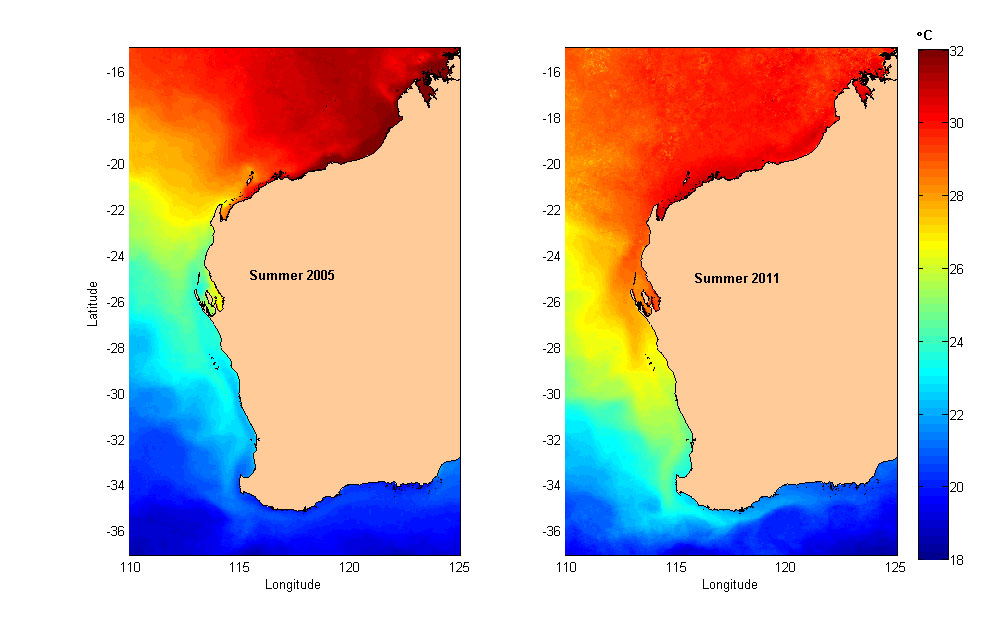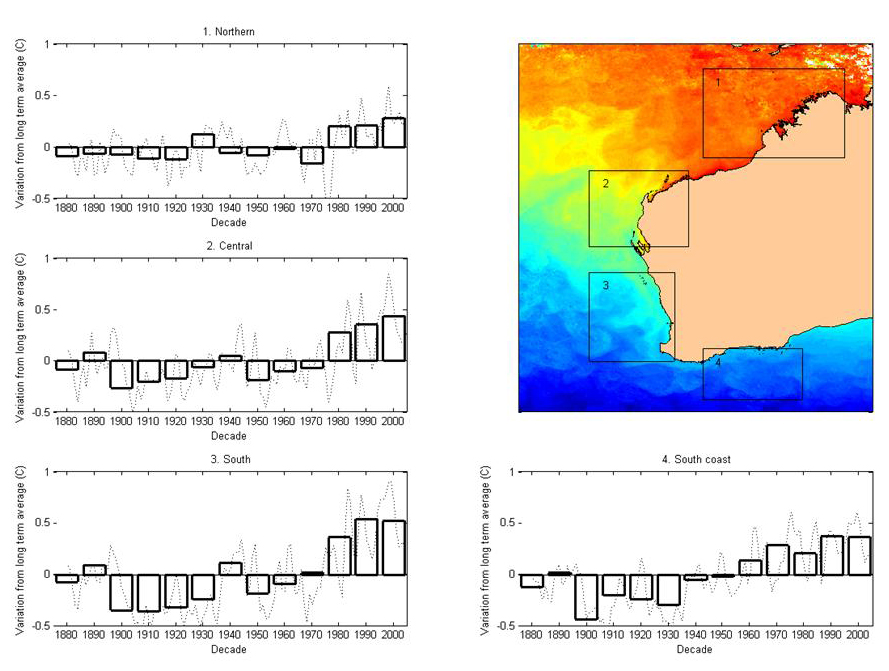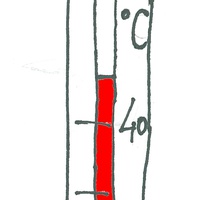Sea temperatures and climate change in Western Australia
By Dr Alistair Hobday and Jason Hartog (CSIRO).
Many coastal waters around Australia are warming up, according to monitoring by the CSIRO Marine and Atmospheric Research. Yet Western Australia has experienced a relatively 'weak' ocean warming of less than 0.5°C since the 1960s.
Sea temperatures off the coast of Western Australia have risen by less than 0.5°C above the long-term average, according to the CSIRO.
Understanding WA's ocean currents may help explain why Western Australia has, in general, experienced a relatively 'weak' ocean warming compared to other regions of Australia.
Southern WA is influenced by the south-flowing Leeuwin Current, which is actually stronger in winter. The Leeuwin Current flows from Western Australia, past South Australia along the edge of the continental shelf, and in strong years also leads to warmer waters in western Victoria.
The seasonal extension of the Leeuwin Current in winter appears from about half way down the coast and then extends to the south coast, around Albany each year.
Recent warming in Western Australia’s seas - about 0.5°C above the long-term average since the 1960s - is linked to natural decadal variability, not long-term change. Warming has been variable along the west coast, with the south warming faster than the north.
But there have been some extreme marine events. For example, in 2011 a marine heat wave in WA resulted in waters more than 3 degrees warmer than average during the autumn months, and was associated with algal mortality, coral bleaching and fish kills. And WA fisheries received more reports of subtropical species like whale sharks, Spanish mackerel and emperor species that were seen further south than they’re usually found.

Above left image: A typical summer for Western Australia (2005). Right: The unusually warm summer (2011) (Image: CSIRO).
A small rise in water temperature over time - even less than 0.5 degrees Celcius - doesn't sound like much but it may have a significant impact on the distribution and physiology of marine species. Marine species have their own set of conditions they prefer to live in, like temperature and pH. Some biota will move (if they can) - also known as shifting their range - in search of these conditions if things get too hot at home. Others may adapt well to warming seas; while some will not survive in the changing conditions.
It is expected that the Leeuwin Current is likely to weaken over the coming century. Despite this, warming may continue to drive southward range shifts in marine biota and there may be more frequent extreme weather events.

Above: changes in Sea Surface Temperature (SST) since 1880 for Western and Northern Australia (CSIRO). Notice in the graphs, that water temperatures start rising above the long-term average after about the 1960s and 1970s.
Acknowledgement: Data shown in these images represent the temperature of water at the surface and are collected by satellite, and processed at CSIRO by Chris Rathbone and colleagues. Further information is available at http://oceancurrent.imos.org.au/. Images and movies prepared by Alistair Hobday and Jason Hartog (CSIRO).
For more information see:
http://www.csiro.au/resources/CAF-working-papers.html
http://oceancurrent.imos.org.au/
Sketch of thermometer: Elsa Gartner, IMAS.












